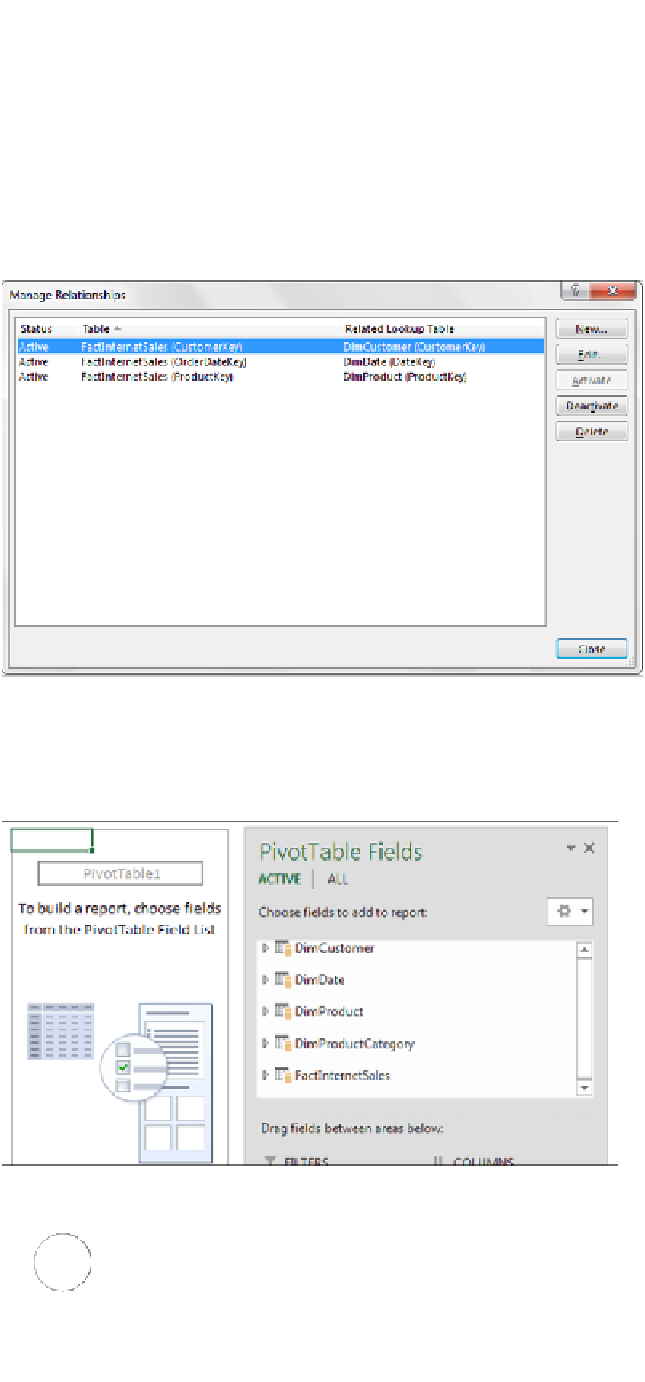Database Reference
In-Depth Information
6.
Select the PivotTable Report radio button and then click OK to create the base pivot.
7.
Click the Relationships button on the Data tab.
The Manage Relationships dialog box opens as shown in Figure 11-13.
8.
Create the needed relationships, then click Close.
Figure 11-13:
Create the needed relationships for the tables you just imported.
In just a few clicks, you've created a powerful platform to build and maintain table PivotTable analysis
based on multiple data objects in an SQL Server database (see Figure 11-14).
Figure 11-14:
You are ready to build your PivotTable analysis based on multiple SQL Server tables and Views.
In addition to pulling from a single SQL Server database, you can add other sources to
the Data Model, including Access tables, other SQL Server database tables, Oracle tables,
and dynamic text files. If you can create a connection to it, you can add it to the Data
Model. The ability to merge disparate data sources into one analytical engine is huge.
Note





Search WWH ::

Custom Search